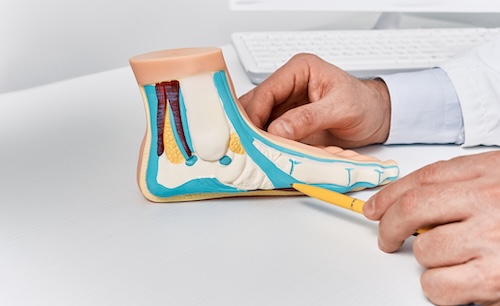Whether you’re a seasoned runner or just starting out, choosing the right running shoes is essential for preventing injuries, improving comfort, and enhancing performance. Wearing the wrong shoes can lead to foot pain, blisters, shin splints, and long-term joint issues. But with so many options, how do you pick the best pair? It all starts with knowing your foot type and running style.
Step 1: Determine Your Foot Type
Your foot arch plays a crucial role in how you run and the type of support you need. There are three main foot types:

1. Flat Feet (Overpronation) 🦶
- Your arches collapse when you run, causing your feet to roll inward (overpronation).
- Best Shoe Type: Stability or motion-control shoes with extra arch support.
- Signs You Need Support: Uneven shoe wear on the inner side, knee pain, or ankle discomfort.
2. Neutral Arches (Neutral Pronation) ✅
- Your feet naturally roll slightly inward for shock absorption.
- Best Shoe Type: Neutral cushioned shoes with balanced support and flexibility.
- Signs You Need Support: Moderate shoe wear pattern and occasional foot fatigue.
3. High Arches (Underpronation/Supination) 👟
- Your feet don’t roll inward enough, putting extra stress on your ankles and outer foot.
- Best Shoe Type: Cushioned running shoes with extra shock absorption.
- Signs You Need Support: Shoe wear on the outer edges, frequent ankle sprains, or stress fractures.
Check out this running shoe shopping guide for expert recommendations to help you find the perfect fit.
🔗https://www.nbcnews.com/select/shopping/best-running-shoes-with-arch-support-rcna197978
Step 2: Consider Your Running Surface
Where you run impacts the type of shoe you need:
🏃 Road Running – Lightweight, cushioned shoes for pavement or treadmill running.
⛰️ Trail Running – Shoes with aggressive treads and extra ankle support for rocky terrain.
🏟️ Track Running – Lightweight racing flats or spikes for speed workouts.
Step 3: Key Features to Look for in Running Shoes
✔ Proper Fit – Your toes should have about a thumb’s width of space in the front.
✔ Arch Support – Match the level of support to your foot type.
✔ Heel Drop – Lower heel drops (4-8mm) encourage a natural stride; higher drops help with heel striking.
✔ Breathability – Mesh uppers keep feet cool and dry.
✔ Shock Absorption – Extra cushioning helps reduce impact on joints.
Step 4: When to Replace Your Running Shoes
🚨 Running shoes typically last 300-500 miles before they lose support.
🚨 Replace them if you notice worn-out soles, decreased cushioning, or increased foot pain.

Final Thoughts
The right running shoes can make all the difference in your performance and foot health. By understanding your foot type, running surface, and shoe features, you can choose the perfect pair to keep you running strong and pain-free.
📞 Need help finding the best shoe for your feet? Schedule a consultation with Podiatry of Greater Cleveland today!

